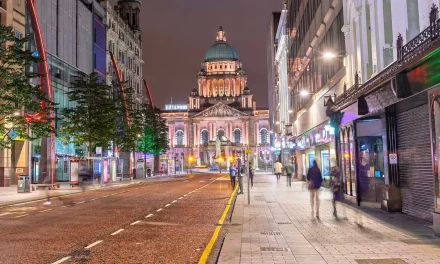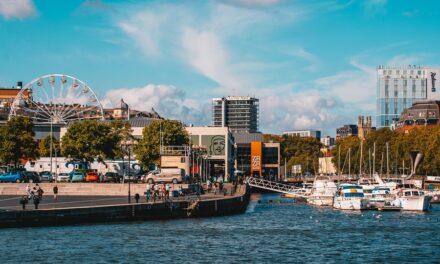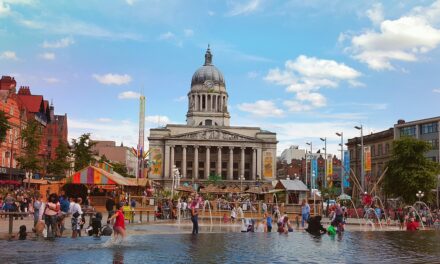SWANSEA
Swansea first appears in FTHM Issue 80
Swansea is a coastal city and county in Wales and in 2014 had a population of 241,300 which was mainly composed of white, Asian, black, mixed race and other ethnic groups and which reflects a small population growth in the twenty-first century. The county of Swansea includes Swansea Bay and the Gower Peninsula.
The area around Swansea dates back to the Palaeolithic age and also many Bronze Age and Iron Age sites like the burial mound at Cillibion have been discovered. Also, the remains of a Roman villa were discovered in the Gower Peninsula. The modern name Swansea is actually derived from the Old Norse name of the original Viking trading post which was created by King Sweyn Forkbeard (960 -1014). As it was a key player in the copper-smelting industry, it also has had the nickname Copperopolis.
In medieval times, Swansea was well-known for its rich and valuable land which was highly contested by Welsh kingdoms. As mentioned, during Viking times, the River Tawe was a focal point for trade and a trading post was established between the 9th and 11th century. In 1106, after the Normans had taken control of the settlement, Swansea Castle was constructed and coins were minted bearing the name Swensi, Sweni and Svenshi in 1140.
Between 1158 and 1184, the first charter was granted by William de Newburgh, 3rd Earl of Warwick which gave Sweynesse townspeople the right to develop the area. Then in 1215, King John introduced a second charter in which Swansea appears as Sweyse. Interestingly, Swansea was not granted city status until 1969.
Significantly, in the 18th and 19th centuries Swansea was a leading area for copper-smelting. This trade was truly international as numerous smelters along the River Tawe received copper and metal ores from not only Cornwall and Devon, but also from Africa, Australia, and North and South America. It was a fact that it was more economical to ship copper ore to Wales than to send it even to Cornwall as to smelt 1 ton of copper ore took about 3 tons of coal – so, as Swansea was close to the coalfields of South Wales, this made economic sense. However, in the late 1800s, this industry declined drastically and so, the Port of Swansea started to focus on trading wool, wine, coal, cloth and hides.
During the 20th century, much of the heavy industry declined resulting in much dereliction in the Lower Swansea Valley. Happily, the Lower Valley Scheme reclaimed much of the land and docks like the South Dock became the Marina. Like many industrial areas of Britain, Swansea was heavily bombed on the 19, 20, and 21 of February 1941 by the Germans, and much of the town was destroyed.
Today, the city has embraced the service sector economy and major employers are the DVLA, Admiral Group, Virgin Media, BT and Amazon.co.uk.
The modern visitor to Swansea is met by some interesting architecture as the city possesses 3 Grade I listed buildings (Swansea Castle ruins, the Tabernacle Chapel and the Swansea Guildhall) and it has various Grade II listed buildings including Swansea Museum, the Midland Bank building and the Ebenezer Baptist Chapel and Hall. It is well worth your while to visit the castle ruins, the Dylan Thomas Centre and the Glynn Vivian Art Gallery.
Normally, Swansea is a good place to be on Beaujolais Day when all the tables are booked up in bars and restaurants well in advance to taste the newly-released Beaujolais wine. This event brings a large amount of money into the city’s economy.
If food is your thing, you could try some of the local cockles or locally sourced laverbread. Or, you might like to take advantage of being close to the sea and visit the lovely seaside village of Mumbles which contains a Victorian pier, boutiques, restaurants, cafes and many independent shops. There is also Swansea Bay which has 5 miles of beach, a promenade, museum and a leisure pool. Gower’s Three Cliff Bay is also a great beach and offers sailing, water skiing, surfing, walking and cycling. It is worth noting that there are golf courses at Swansea Bay and Gower.
If you enjoy watching high quality sport, you could go and watch Swansea AFC at the Liberty Stadium or maybe, if you appreciate rugby union, you could invest some time in going to one of the Ospreys games.
Swansea is also a great place to live as well as visit. If you have a young family and fancy settling down in the Swansea area, you will find that it has a good education system with both good state and private schools as well as excellent opportunities of education at Swansea University or the University of Wales.
If you like a bit of culture, there is the Grand Theatre as well as the Dylan Thomas Theatre; you might appreciate the summer performances of Shakespeare at Oystermouth Castle or events at Singleton Park. In the Autumn, international orchestras and soloists also perform at Brangwyn Hall.
This is only a brief look at the city of Swansea, but I hope it is enough to whet your appetite and inspire you to visit it in the near future as it is well-served by road and rail – so, you have no excuse!





Recent Comments